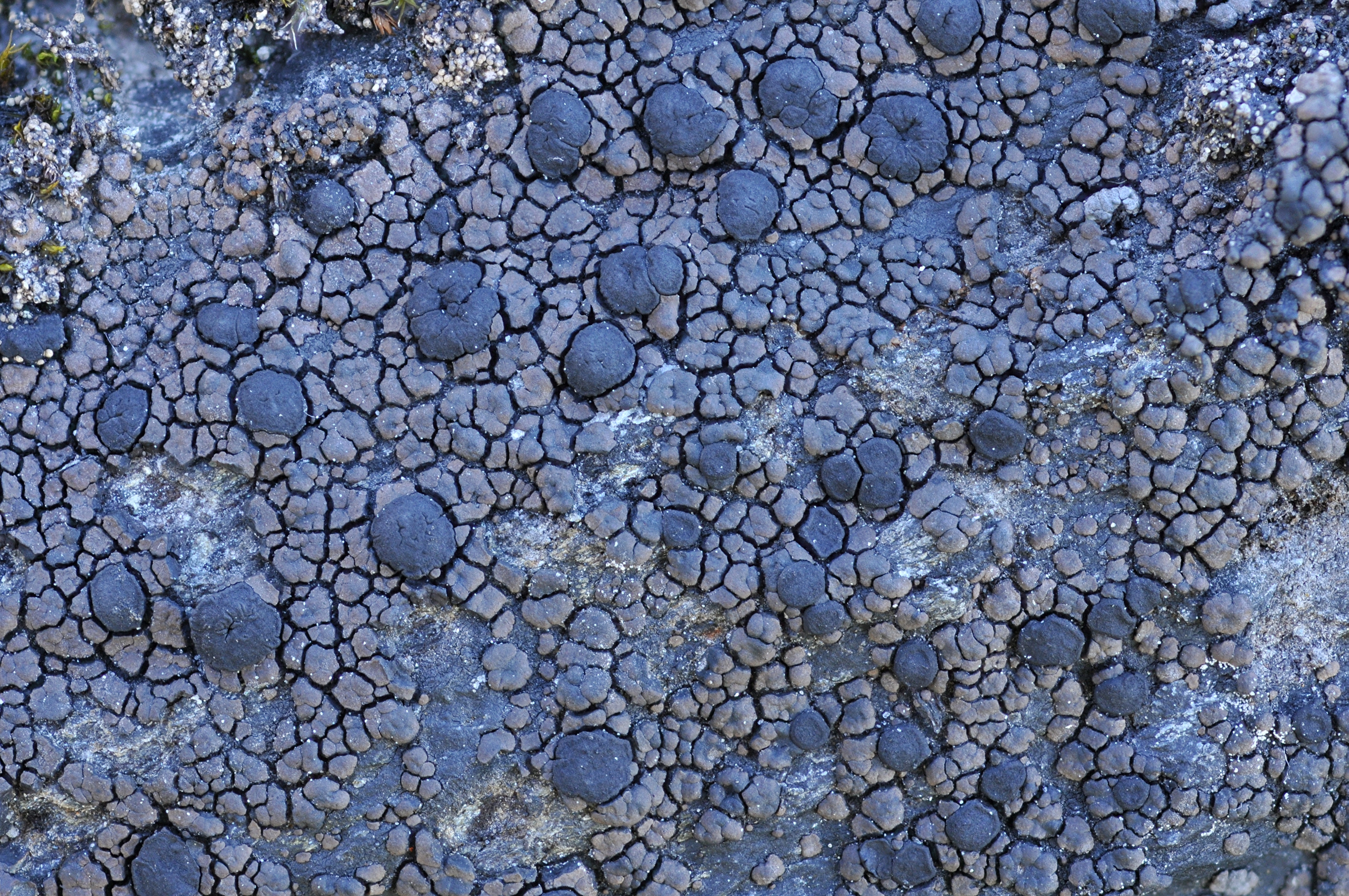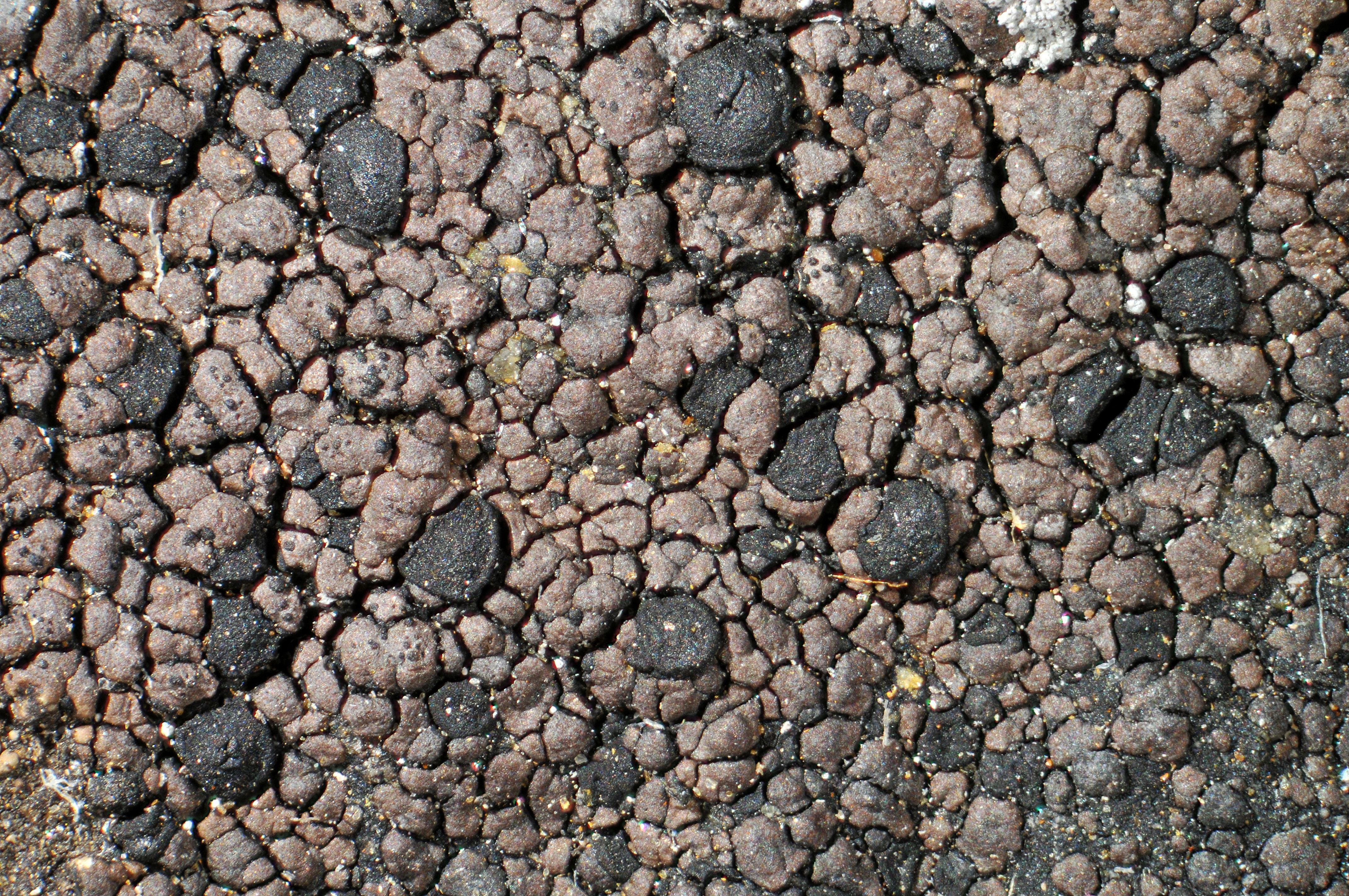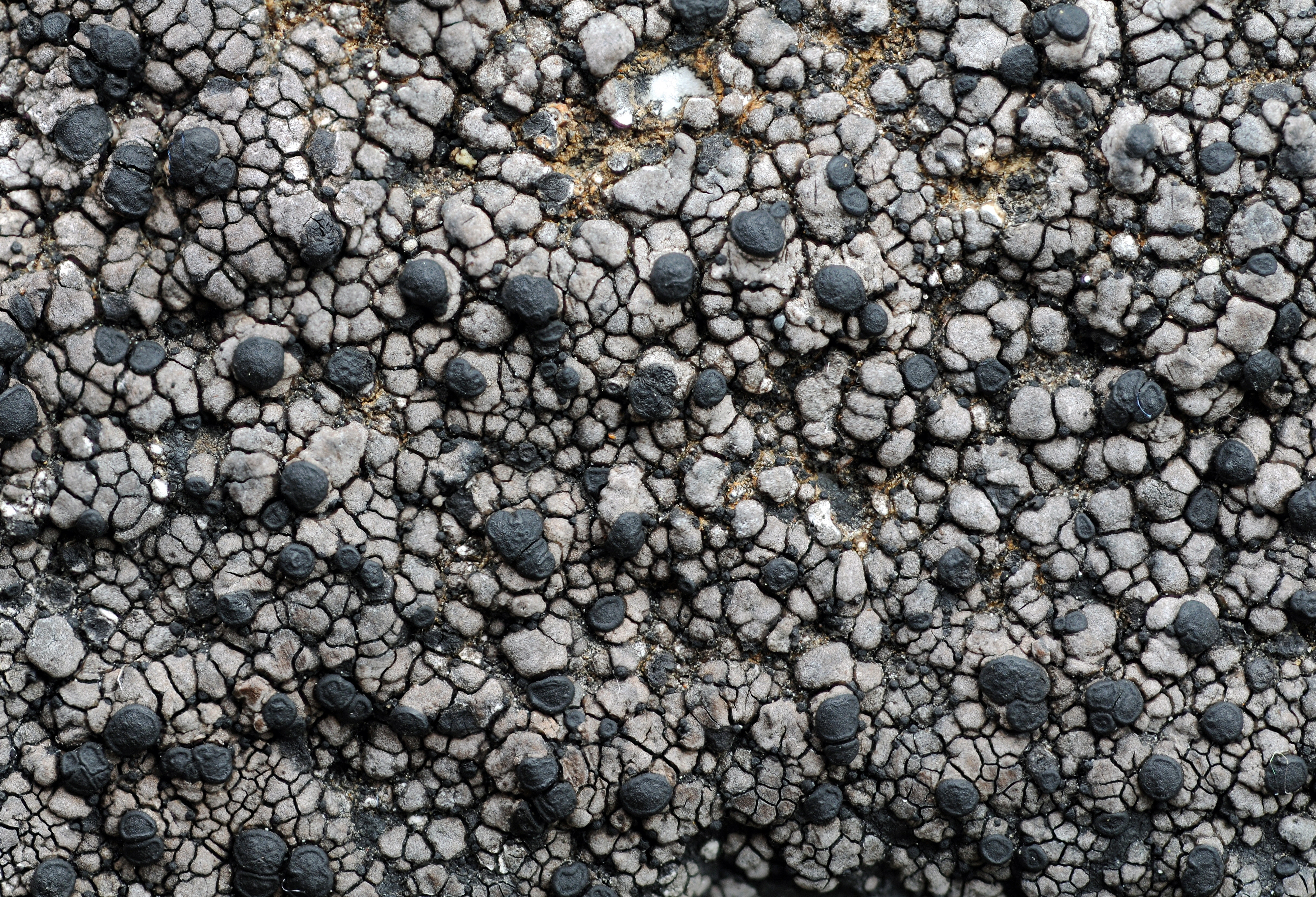Rhizocarpon badioatrum
- Innhold
- Morphology
- Chemistry
- Habitat
- Comment
- Look-alikes
Morphology
Thallus areolate, up to 10 cm diam.; hypothallus usually well developed, black; areolae up to 2 mm diam., medium brown to dark brown, sometimes partly greyish brown, dull, contiguous, thick, usually angular or crenulate, more or less plane; medulla KI–. – Apothecia up to 1 mm diam., black, epruinose, orbicular or angular, remaining more or less plane and marginate; excipulum reddish brown in inner part, rim brownish black, K+ red; hypothecium brown, K–; hymenium colourless; epihymenium reddish brown, K+ red; minute red granules may be present in the epihymenium (dissolving in K); ascospores 8 per ascus, 1-septate, soon becoming dark brown, 27–38 × 13–19 µm. – Conidiomata not seen.
Chemistry
No lichen substances.
Habitat
On siliceous rock, often at humid sites or near lakes and rivers, both in the lowlands and in the mountains. Common.
Comment
The name R. badioatrum is in Scandinavia currently applied to two morphologically rather similar species, here provisionally named R. badioatrum and R. vulgare. Type studies may alter this this nomenclature. Rhizocarpon badioatrum differs from R. vulgare in having usually darker brown, thicker, and more plane areolae with a more angular to crenulate margin; in the absence of lichen substances in the thallus; and in having a broader, more diffusely delimited, more reddish brown epihymenium which is more strongly K+ red. Elsewhere, e.g. in Great Britain, the name R. badioatrum may be used for the stictic acid-containing species here named R. cinereonigrum. The R. badioatrum-complex even includes specimens containing gyrophoric acid (possibly a still unnamed species). Rhizocarpon copelandii and R. jemtlandicum differs from the R. badioatrum-complex in having a greenish brown epihymenum containing crystals visible in polarized light.




